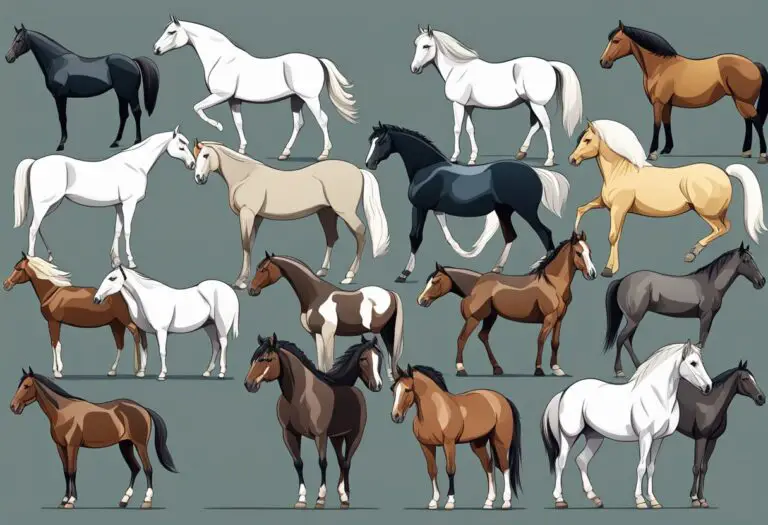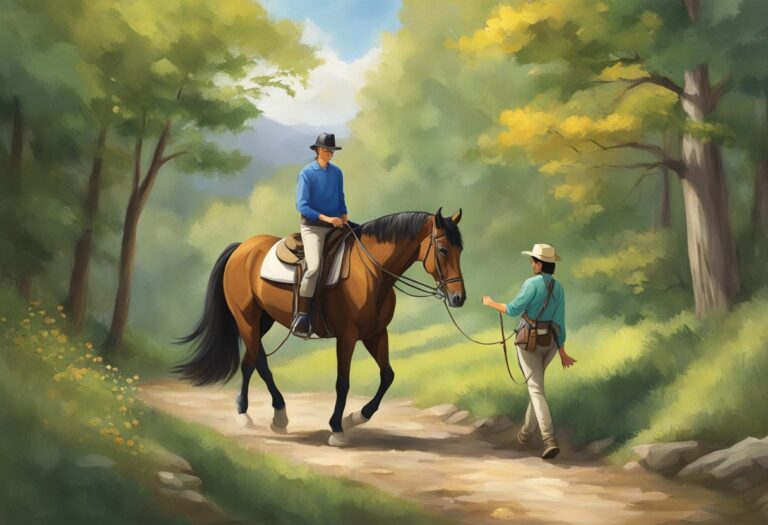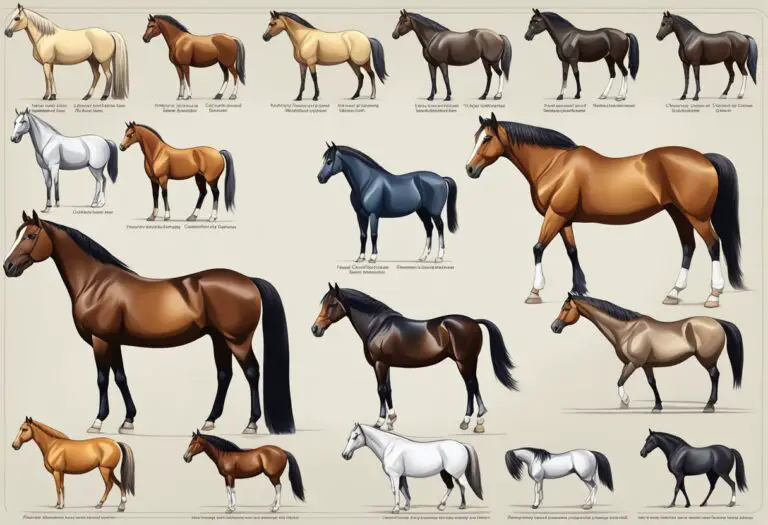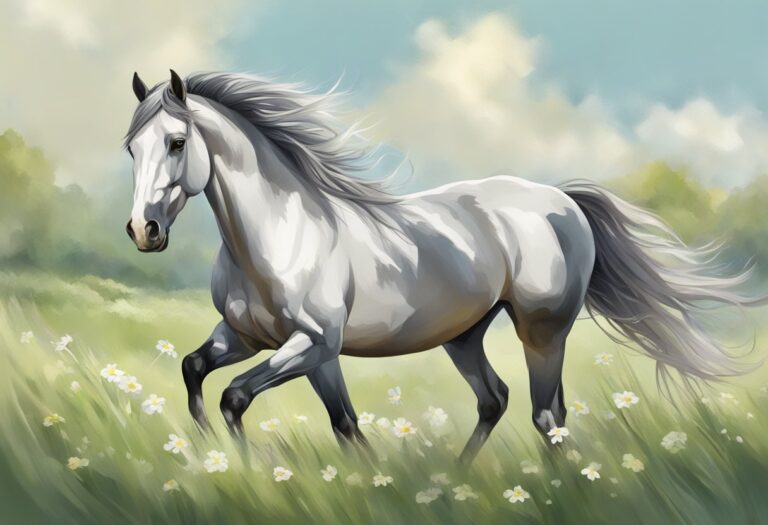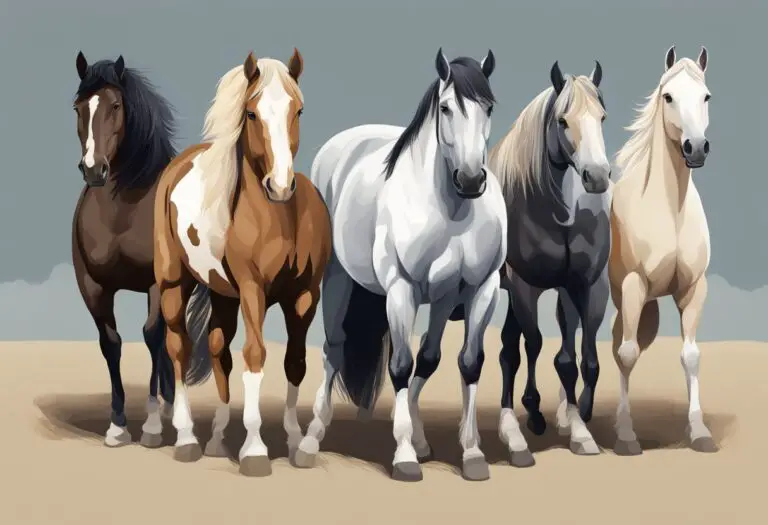What Are the Common Health Issues in Horse Breeds?
Horses are majestic creatures that have been domesticated for centuries. They are used for transportation, sports, and even therapy. However, like all animals, horses are prone to various health issues that can affect their well-being. It is important for horse owners and caretakers to be aware of the common health issues that can arise in different horse breeds.
One of the most common health issues in horses is lameness. This can be caused by a variety of factors such as injury, arthritis, or poor hoof care. Lameness can be difficult to diagnose and treat, which is why it is important to have a veterinarian evaluate the horse if any signs of lameness are noticed.
Another common health issue in horses is colic. Colic is a term used to describe abdominal pain and discomfort in horses. It can be caused by a variety of factors such as changes in diet, dehydration, or stress. Colic can be a serious condition and requires immediate veterinary attention. Understanding the common health issues in horse breeds can help horse owners and caretakers provide the best possible care for their animals.
Genetic Disorders

Horses, like all mammals, can be affected by genetic disorders that are passed down from their parents. These disorders can lead to a range of health issues, and some can even be fatal. Here are some of the most common genetic disorders in horse breeds:
Hyperkalemic Periodic Paralysis
Hyperkalemic Periodic Paralysis (HYPP) is a genetic disorder that affects certain breeds of horses, including Quarter Horses, Paints, and Appaloosas. It is caused by a mutation in the gene that controls the movement of potassium ions in the muscles. Horses with HYPP experience episodes of muscle tremors, weakness, and paralysis, which can be triggered by stress, exercise, or changes in diet. In severe cases, HYPP can lead to respiratory failure and death.
Overo Lethal White Syndrome
Overo Lethal White Syndrome (OLWS) is a genetic disorder that affects certain breeds of horses, including Paints and Quarter Horses. It is caused by a mutation in the gene that controls the development of the enteric nervous system, which is responsible for regulating the digestive system. Foals with OLWS are born with a white coat and blue eyes, but they are unable to pass manure due to a lack of nerve cells in their intestines. This can lead to severe colic and death within a few days of birth.
Severe Combined Immunodeficiency
Severe Combined Immunodeficiency (SCID) is a genetic disorder that affects Arabian horses. It is caused by a mutation in the gene that controls the development of the immune system. Foals with SCID are born without a functional immune system, which makes them highly susceptible to infections. They often die within a few months of birth, unless they receive a bone marrow transplant from a compatible donor.
By understanding the genetic disorders that can affect horses, breeders can take steps to reduce the incidence of these diseases in their herds. It is important to test breeding horses for these disorders and to avoid breeding carriers together in order to prevent passing on these genetic disorders to future generations.
Musculoskeletal Issues

Osteochondrosis
Osteochondrosis (OC) is a developmental orthopedic disease that affects the growth of cartilage in young horses. It is most commonly seen in rapidly growing horses between the ages of 4 and 12 months. OC can affect any joint in the horse’s body, but it is most commonly seen in the hocks, stifles, and shoulders. Horses with OC may show lameness, stiffness, or a reluctance to move.
Navicular Disease
Navicular disease is a chronic degenerative condition that affects the navicular bone and associated structures in the horse’s foot. It can cause lameness and pain, and is most commonly seen in horses between the ages of 7 and 14 years. Horses with navicular disease may show a shortened stride, a reluctance to move, or a change in gait.
Laminitis
Laminitis is a painful and potentially life-threatening condition that affects the horse’s hoof. It is caused by a disruption in the blood flow to the sensitive laminae that attach the hoof to the coffin bone. Laminitis can be caused by a variety of factors, including diet, stress, and metabolic disorders. Horses with laminitis may show lameness, reluctance to move, or a change in stance.
Overall, musculoskeletal issues can be a significant problem for horses of all breeds. It is important for horse owners to be aware of the signs and symptoms of these conditions, and to seek veterinary care if they suspect that their horse may be affected. With proper management and treatment, many horses with musculoskeletal issues can go on to lead happy, healthy lives.
Respiratory Conditions

Recurrent Airway Obstruction
Recurrent airway obstruction (RAO), also known as heaves, is a common respiratory condition in horses. It is characterized by a chronic cough, nasal discharge, and difficulty breathing, especially during exercise or in dusty environments. RAO is caused by an allergic reaction to inhaled particles such as mold spores, dust, and pollen. Treatment options include reducing exposure to allergens, administering bronchodilators, and anti-inflammatory medications.
Equine Asthma
Equine asthma, also known as inflammatory airway disease (IAD), is a chronic respiratory condition that affects horses of all ages. It is caused by inflammation of the airways, which can lead to coughing, wheezing, and difficulty breathing. Equine asthma is often triggered by exposure to allergens such as dust, mold, and pollen. Treatment options include reducing exposure to allergens, administering bronchodilators, and anti-inflammatory medications.
Exercise-Induced Pulmonary Hemorrhage
Exercise-induced pulmonary hemorrhage (EIPH) is a common respiratory condition in racehorses. It is characterized by bleeding in the lungs during intense exercise, which can lead to coughing, nasal discharge, and difficulty breathing. EIPH is caused by the high pressure in the lungs during exercise, which can damage the delicate blood vessels. Treatment options include reducing the intensity of exercise, administering bronchodilators, and using furosemide to reduce the pressure in the lungs.
Digestive Problems

Colic
Colic is a general term used to describe abdominal pain in horses. It is a common digestive problem in horses and can be caused by various factors, such as changes in diet, lack of exercise, and stress. Symptoms of colic include pawing, rolling, sweating, and loss of appetite. Treatment for colic depends on the severity of the case and may include pain relief medication, fluid therapy, and surgery in severe cases.
Gastric Ulcers
Gastric ulcers are another common digestive problem in horses. They are caused by the erosion of the stomach lining due to excess acid production. Horses that are kept in stalls and fed high-grain diets are at a higher risk of developing gastric ulcers. Symptoms of gastric ulcers include decreased appetite, weight loss, and poor coat condition. Treatment for gastric ulcers involves reducing the amount of grain in the horse’s diet, administering acid-reducing medication, and providing a stress-free environment.
Equine Metabolic Syndrome
Equine Metabolic Syndrome (EMS) is a metabolic disorder that affects horses. It is characterized by insulin resistance, obesity, and laminitis. Horses with EMS are at a higher risk of developing digestive problems such as colic and gastric ulcers. Treatment for EMS involves managing the horse’s diet, providing regular exercise, and administering medication to control insulin levels.
In conclusion, digestive problems are common in horses and can be caused by various factors. It is important for horse owners to be aware of the symptoms of digestive problems and seek veterinary care promptly if their horse shows any signs of discomfort or illness.
Infectious Diseases

Infectious diseases are a significant concern for horse owners and can cause severe health issues. Proper vaccination and biosecurity measures can help prevent the spread of these diseases. Here are some of the most common infectious diseases that affect horses.
Equine Influenza
Equine influenza is a highly contagious respiratory disease caused by the influenza virus. It spreads through the air by coughing and sneezing. Symptoms include fever, cough, nasal discharge, and loss of appetite. The disease can be severe, particularly in young horses or those with weakened immune systems. Vaccination is an effective way to prevent the disease.
Strangles
Strangles is a highly contagious bacterial infection caused by Streptococcus equi. It spreads through direct contact with infected horses or contaminated equipment. Symptoms include fever, nasal discharge, and swollen lymph nodes in the head and neck. In severe cases, the lymph nodes can burst, leading to abscesses and difficulty breathing. Vaccination, isolation of infected horses, and strict biosecurity measures can help prevent the spread of the disease.
Equine Herpesvirus
Equine herpesvirus (EHV) is a common viral infection that can cause respiratory disease, abortion, and neurological disease. The virus spreads through direct contact with infected horses or contaminated equipment. Symptoms include fever, cough, nasal discharge, and neurological signs such as incoordination and paralysis. Vaccination can help prevent respiratory and abortion forms of the disease, but there is no vaccine for the neurological form. Isolation of infected horses and strict biosecurity measures can help prevent the spread of the disease.
In conclusion, infectious diseases are a significant concern for horse owners. Proper vaccination and biosecurity measures can help prevent the spread of these diseases. Horse owners should work closely with their veterinarians to develop a vaccination and biosecurity plan to protect their horses from infectious diseases.
Parasitic Infestations

Parasitic infestations are a common health issue in horse breeds. These infestations can lead to serious health problems and even death if left untreated. Here are some of the most common types of parasitic infestations in horses:
Strongyles
Strongyles, also known as bloodworms, are a type of parasitic roundworm that can cause serious damage to a horse’s intestines. They are typically found in horses that graze on contaminated pasture. Symptoms of a strongyle infestation include weight loss, diarrhea, and colic. Treatment usually involves deworming medication.
Roundworms
Roundworms are another type of parasitic worm that can infect horses. They are typically found in young horses, as they are passed from mare to foal through the mare’s milk. Symptoms of a roundworm infestation include a pot-bellied appearance, poor coat condition, and weight loss. Treatment usually involves deworming medication.
Bots
Bots are the larvae of botflies, which lay their eggs on a horse’s hair. When the horse licks or bites at the eggs, they hatch and burrow into the horse’s mouth or stomach. Symptoms of a bot infestation include irritation, ulcers, and colic. Treatment usually involves removing the bots manually or with medication.
Prevention is key when it comes to parasitic infestations in horses. Regular deworming, good pasture management, and proper hygiene can all help to prevent these common health issues.
Dermatological Conditions

Horses are susceptible to a variety of skin issues, including dermatological conditions. These conditions can be caused by various factors, including parasites, fungi, bacteria, and environmental factors.
Rain Scald
Rain scald, also known as dermatophilosis, is a common skin condition in horses that is caused by a bacterium called Dermatophilus congolensis. This condition is more common in horses that are kept in damp and humid conditions. Rain scald appears as crusty scabs on the horse’s skin, which can be painful and itchy. Treatment involves keeping the horse dry and using topical antibiotics.
Ringworm
Ringworm is a fungal infection that can affect horses. It is highly contagious and can be spread through contact with infected animals or objects. Ringworm appears as circular patches of hair loss and scaly skin. Treatment involves using antifungal medications and disinfecting the horse’s environment.
Sweet Itch
Sweet itch, also known as summer eczema, is a skin condition that is caused by an allergic reaction to the bites of midges. This condition is more common in certain breeds of horses, such as Icelandic horses and Shetland ponies. Sweet itch appears as intense itching and hair loss, particularly around the mane and tail. Treatment involves using insect repellents and corticosteroids to manage the horse’s symptoms.
In conclusion, dermatological conditions can be a common issue in horses. It is important for horse owners to be aware of these conditions and take steps to prevent and treat them. Regular grooming and maintaining a clean and dry environment can go a long way in preventing skin issues in horses.
Reproductive Disorders

Twinning
Twinning is a rare occurrence in horses and it can lead to complications during pregnancy and birth. It is important to diagnose twin pregnancies early on, as they can lead to abortion, premature birth, or stillbirth. If twin foals are born alive, they may be smaller and weaker than single foals, and may require extra care and attention.
Dystocia
Dystocia, or difficult birth, can occur in mares for a variety of reasons, such as fetal malposition, insufficient uterine contractions, or a large fetus. Dystocia can lead to complications for both the mare and the foal, and may require veterinary intervention. It is important to monitor mares closely during foaling and seek veterinary assistance if any problems are detected.
Endometritis
Endometritis is an inflammation of the lining of the uterus and is a common reproductive disorder in mares. It can be caused by bacterial infection, poor reproductive conformation, or other factors. Endometritis can lead to infertility, abortion, or reduced fertility. Treatment may involve antibiotics, uterine lavage, or other therapies, depending on the cause and severity of the condition.
Neurological Disorders

Neurological disorders are common in horses and can affect their movement, coordination, and behavior. Some of the most common neurological disorders that affect horses are Equine Protozoal Myeloencephalitis, West Nile Virus, and Wobbler Syndrome.
Equine Protozoal Myeloencephalitis
Equine Protozoal Myeloencephalitis (EPM) is a neurological disease caused by a parasite that attacks the central nervous system of horses. The symptoms of EPM can vary widely, but they typically include ataxia, weakness, and muscle wasting. EPM can be difficult to diagnose, and treatment can be expensive and time-consuming.
West Nile Virus
West Nile Virus (WNV) is a viral disease that is transmitted by mosquitoes. Horses infected with WNV can develop neurological symptoms such as ataxia, weakness, and muscle twitching. In severe cases, horses may develop paralysis and require supportive care to recover. Vaccination against WNV is recommended for all horses.
Wobbler Syndrome
Wobbler Syndrome is a neurological condition that affects the cervical vertebrae in horses. The condition causes compression of the spinal cord, which can lead to ataxia, weakness, and incoordination. Wobbler Syndrome can be caused by a variety of factors, including genetics and nutrition. Treatment may include surgery, medication, and physical therapy.
Overall, neurological disorders can be serious and debilitating for horses. Early diagnosis and treatment are essential for the best possible outcome. Horse owners should work closely with their veterinarian to monitor their horse’s health and address any concerns promptly.
Ophthalmic Issues

Horses are prone to various ophthalmic issues that can affect their vision and overall health. Some of the most common ophthalmic issues in horses are cataracts, uveitis, and corneal ulcers.
Cataracts
Cataracts are a common ophthalmic issue in horses, especially in older horses. They are characterized by the clouding of the lens of the eye, which can lead to impaired vision or even blindness. Cataracts can be caused by genetics, trauma, or other underlying health issues. Treatment for cataracts usually involves surgery to remove the affected lens.
Uveitis
Uveitis, also known as “moon blindness,” is a common inflammatory condition that affects the uvea, the middle layer of the eye. It can cause pain, sensitivity to light, tearing, and even blindness if left untreated. Uveitis can be caused by infections, trauma, or autoimmune disorders. Treatment for uveitis usually involves medication to reduce inflammation and manage pain.
Corneal Ulcers
Corneal ulcers are a common ophthalmic issue in horses, especially those that spend a lot of time outdoors. They are characterized by a loss of tissue on the surface of the cornea, which can lead to pain, tearing, and even blindness if left untreated. Corneal ulcers can be caused by trauma, infections, or underlying health issues. Treatment for corneal ulcers usually involves medication to manage pain and prevent infection, as well as surgery in severe cases.
In conclusion, ophthalmic issues are a common health concern for horses. It is important for horse owners to be aware of the signs and symptoms of these conditions and seek veterinary care promptly if their horse is showing any signs of eye problems.
Preventive Care and Management

Preventive care and management play a crucial role in maintaining the overall health and well-being of horses. Here are some important tips to keep your horse healthy:
- Regular veterinary check-ups: It is essential to schedule regular check-ups with a veterinarian to ensure that your horse is healthy and free from any health issues. A veterinarian can also provide guidance on vaccinations, deworming, and other preventive measures.
- Proper nutrition: Horses require a balanced diet that meets their nutritional needs. A diet that is deficient in essential vitamins and minerals can lead to health issues such as colic, laminitis, and other digestive disorders. It is important to provide your horse with high-quality hay, pasture, and feed.
- Exercise: Regular exercise is essential for maintaining the health and fitness of horses. Exercise helps to improve circulation, strengthen muscles, and prevent obesity. Horses should be given ample time to exercise and should be allowed to move around freely.
- Clean environment: Horses should be kept in a clean and hygienic environment to prevent the spread of diseases. Stalls and paddocks should be cleaned regularly, and horses should be provided with fresh water and bedding.
- Dental care: Horses require regular dental care to maintain healthy teeth and gums. Dental issues such as sharp points, overgrown teeth, and other dental problems can cause discomfort and pain. Regular dental check-ups and floating can help prevent these issues.
By following these preventive care and management tips, horse owners can help ensure that their horses remain healthy and free from common health issues.


